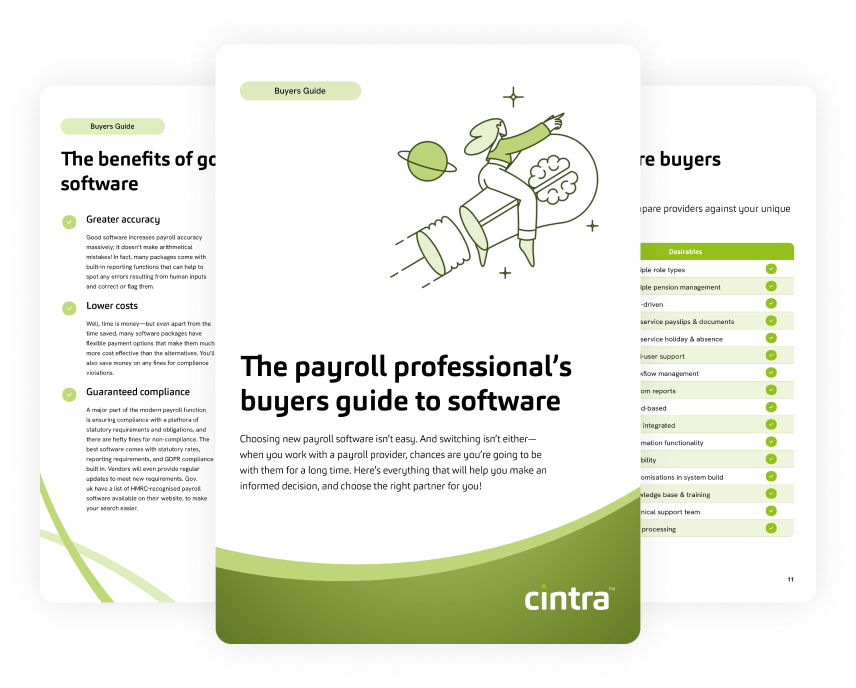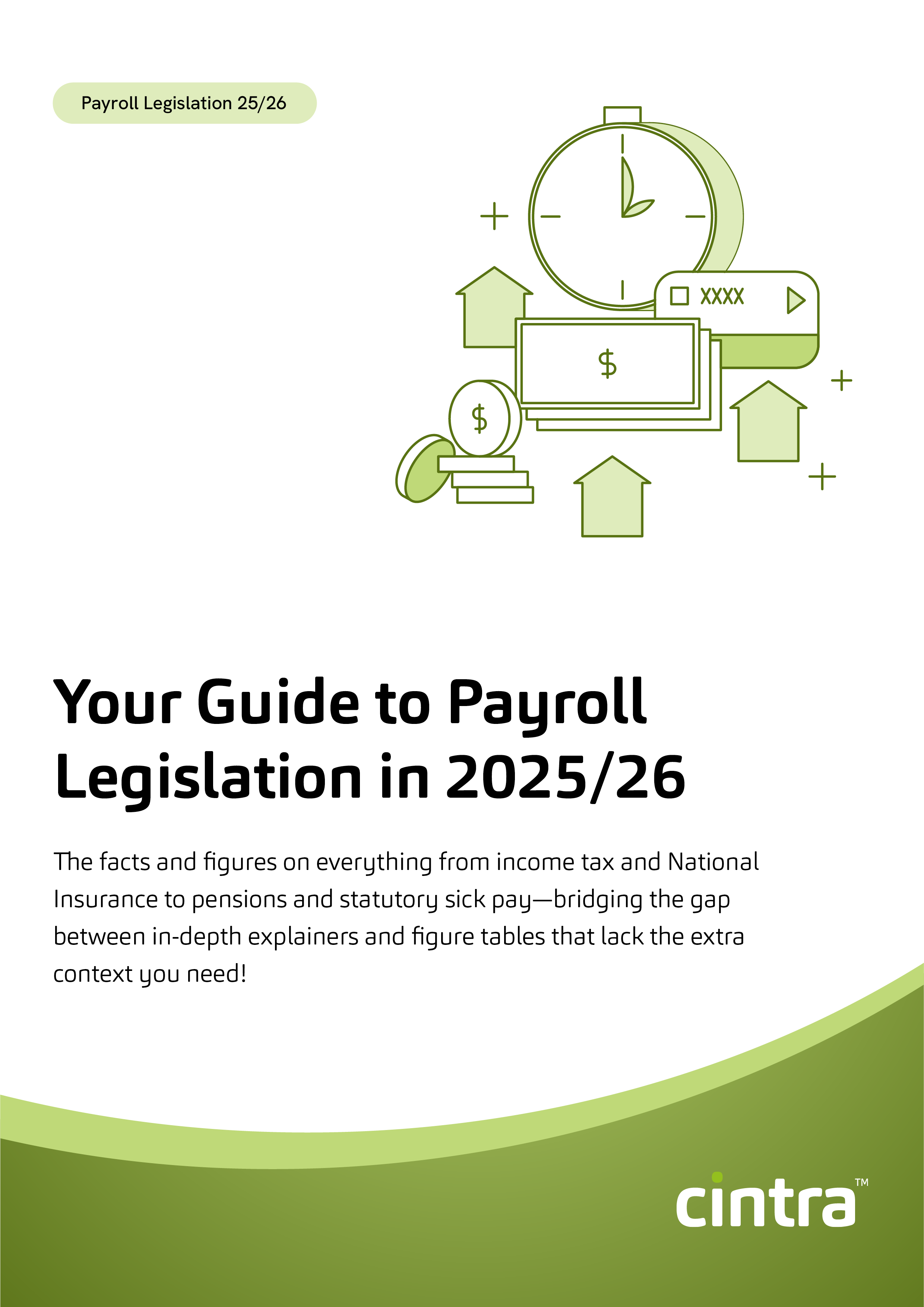Changing payroll software might seem like a big step, but it’s worth it when you think about how much time and hassle it could save.
Are you tired of spending countless hours on payroll? Does your current software feel like it’s dragging you down?
If paying your employees the right amount, on time, causes endless frustration, then your payroll software clearly isn’t up to scratch.
Imagine not having to stress about calculating employee pay or deducting taxes. With the right payroll software, you can automate pay runs, guarantee accurate tax filings, and stay HMRC compliant—all while freeing up time to focus on growing your business.
Let’s walk you through everything you need to know about changing payroll systems—from choosing the right software to avoiding common mistakes.
Why might you consider changing payroll software?
Before we get into the how, let’s think about the why.
Switching payroll companies can be a smart move if you’re facing recurring issues with your current system. Perhaps you’re dealing with frequent errors, slow processing times, or a lack of customer support. Or maybe your business is growing, and your current software can’t handle the increased workload.
Your checklist when changing payroll software
When changing payroll systems, there are a number of key questions that we recommend asking.
Start by asking yourself:
- Are you still under contract with your current provider? (This will help you understand the timescale for making the move).
- What’s your budget for new software? (Knowing this will help you narrow down the options that fit your financial plan).
- What do you need from the new software that your current system can’t offer? Are there features or tools that would make your payroll process smoother?
- Are there tasks in payroll that take up a lot of time or resources right now, which your current system can’t automate? Could a new system help streamline these challenges?
- What kind of payroll service are you after?
Then for a potential provider:
- Does the provider have experience in your industry?
- Is their software user-friendly?
- Is their software easy to integrate?
- How responsive is their customer support team?
- What’s their pricing structure?
- What’s their value proposition?
- Can they provide references from previous clients?
You should also consider a few additional questions for features that aren’t absolutely essential, but would be nice to have. Here are some examples:
- Can the system automatically calculate average holiday pay based on the last 52 weeks?
- Does the software offer automation for things like backpay or adjusting pay for starters and leavers?
- How flexible and configurable is the system? We need a payroll solution that can adapt to our specific needs rather than just a one-size-fits-all approach.
- How easily can the system generate reports that are useful for the leadership team and other key stakeholders? Can we access the data in a way that helps us make better business decisions?
- Does the provider offer mobile accessibility for employees to access their payslips and other payroll information on their smart devices?
When’s the best time to switch payroll software?
The best time to change payroll software can vary depending on your specific needs.
While you can technically switch any time of year, aiming to go live in April (the start of the new tax year) might be the easiest option. To make this happen, you’ll need to start planning well in advance, as this approach requires time for setup, data migration, and testing.
Starting in April also eliminates the need to carry over year-to-date (YTD) information from the previous system, simplifying the data transfer process.
How difficult is changing payroll software mid-year?
Changing payroll software mid-year isn’t necessarily more difficult—it’s all about the amount of data you need to provide.
If you switch earlier in the tax year, like in April, May, or June, there are fewer months of data to pull together, which makes things a bit simpler.
On the other hand, if you go live later in the year, say in February or March, you’ll need to gather 11–12 months of data to transfer.
The process itself stays the same; it’s just the workload for preparing the data that varies.
What are the main challenges with changing payroll software mid-year?
The biggest challenge when changing payroll software mid-year is collecting all the necessary data.
If your current system is cloud-based (SaaS), you can usually export reports relatively easily. However, if you rely on a third-party provider (like a payroll bureau) and are bringing the process in-house, getting the data you need might be more challenging.
That said, this issue isn’t tied to the time of year—it’s the same challenge whether you switch in April or December.
Get the latest insights and best practice guides, direct to your inbox.
How to change payroll systems
Let’s walk you through the steps of changing payroll systems using practical scenarios.
Imagine you’re the payroll manager at a mid-sized company. Your current software has been causing frequent errors that eat into your time and create unnecessary stress. It’s time to find something better.
Step 1: Evaluate your current payroll software
Start by identifying the reasons for the switch.
- Current issues: Is the software missing certain key features like calculating backdated pay entitlement? Is it hard to integrate with your accounting system?
- Future needs: as your business grows, you might need features like automated compliance updates, better analytics, or a mobile-friendly platform.
Example: you realise your current software doesn’t handle pension contributions accurately, and you need a system with robust compliance features.
Step 2: Check your current contract
Before making any moves, dig out your contract with the current provider.
- Look for cancellation clauses, notice periods, or potential fees.
- Knowing these details upfront helps you avoid unexpected costs.
Example: you find you need to give 60 days’ notice or risk paying an additional month’s fee.
Step 3: Align your software with your accounting requirements
Your payroll software should align effortlessly with your accounting processes.
- Make a list of features that are non-negotiable, such as compatibility with your accounting software, HMRC compliance, and scalability.
- Think about the future too—what if you expand internationally?
Example: your finance team uses Sage for accounting, so your new payroll system must integrate with it.
Step 4: Explore other providers
Research is critical, you need to compare multiple providers to find the best fit.
- Start by arranging some initial conversations and discovery calls to see if they can meet your needs.
- Then move onto demos: this gives you a hands-on feel for usability.
- Weigh pros and cons: consider pricing, customer support, and specific features.
- Read reviews: learn from the experiences of similar businesses.
Example: you compare three providers. One is affordable but lacks real-time reporting; another is pricey but offers 24/7 support. The third hits the sweet spot for your needs and budget.
Step 5: Pick the right time to make the switch
Choose a transition period that minimises disruption.
- Switching mid-payroll cycle can cause errors, so aim for the end of a month, quarter, or tax year.
- Make sure the new provider’s timeline aligns with yours—not the other way around.
Example: if you decide to switch in April, you would begin your search in September, giving yourself ample time to evaluate providers, plan the transition, and prepare for a smooth switch right after processing your year-end submissions.
Step 6: Notify your old provider and collect data for your new provider
Inform your current provider of your decision to terminate the contract.
- Back up all your data—employee details, payroll records, and business information.
- Coordinate with the new provider to facilitate a smooth handover.
Example: you export your payroll data to Excel and share it securely with the new provider.
Step 7: Notify your employees
Communication with your employees is key to avoiding confusion.
- Explain the change, highlight benefits (e.g., a better self-service portal), and outline any actions they need to take.
- Assure them that payroll accuracy and timing won’t be affected.
Example: you send an email explaining the transition and encourage employees to update their contact details in the new system.
Step 8: Roll out the new software
Before fully transitioning to your new payroll system, run your old and new systems side by side for a few months.
These parallel runs allow you to compare results and catch any discrepancies before going live with the new provider.
When you’re live, keep a close eye on the first few payroll cycles to make sure everything runs as expected, and don’t hesitate to address any issues promptly.
Congratulations—you’ve officially transitioned to your new payroll system!
Common mistakes to avoid when changing payroll software
Here are some of the most common mistakes to avoid when changing payroll systems:
- Not involving stakeholders: make sure your senior leadership team, employees, and any other key stakeholders are on board with the switch. The last thing you want is to have to revert to your old system due to poor internal communication.
- Choosing non-compliant software: always check that your new payroll software is HMRC-compliant. It’ll save you headaches by streamlining the payroll tax process and keeping everything above board.
- Overlooking integrations: your payroll system should connect easily to other tools you use, like HR software or expense management software.
- Rushing the switch: timing is crucial. Avoid switching during a payment period—do it right after one instead, so you have plenty of time to settle everything before the next payday.
Why Cintra?
With over 40 years of experience, our team knows payroll inside and out.
Cintra grows with your business. Whether you have a team of 10 or 300+, our flexible solutions can scale to meet your needs. And we don’t stop at payroll—we also offer HR outsourcing, recruitment software, expense management, and more to support all areas of your business.
With a proven track record of awards and recognition, including CIPP’s Payroll Service Provider of the Year in 2024, Cintra is a name you can trust to deliver expert service and innovative solutions.
Want to see if Cintra is the right payroll software for you?
With a large in-house team of developers, real payrollers running our product team, and updates pushed to our systems almost daily, you know you’re always getting the best of the best. Book a demo today to see Cintra in action.

Payroll Software Buyers Guide
Download your payroll software buyers guide—covering everything you need to know in your buyers journey, including a handy checklist.
Download your buyers guide


